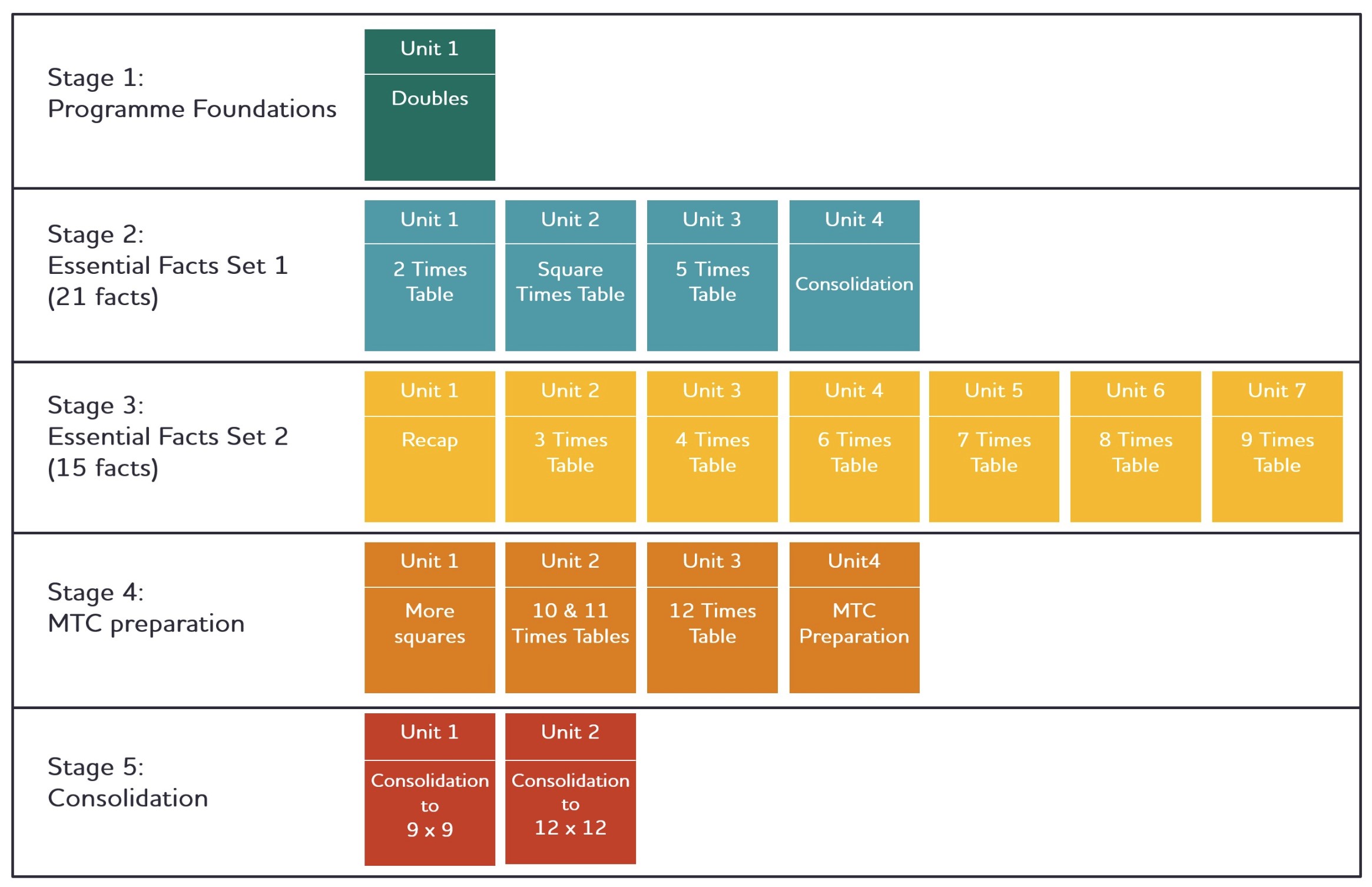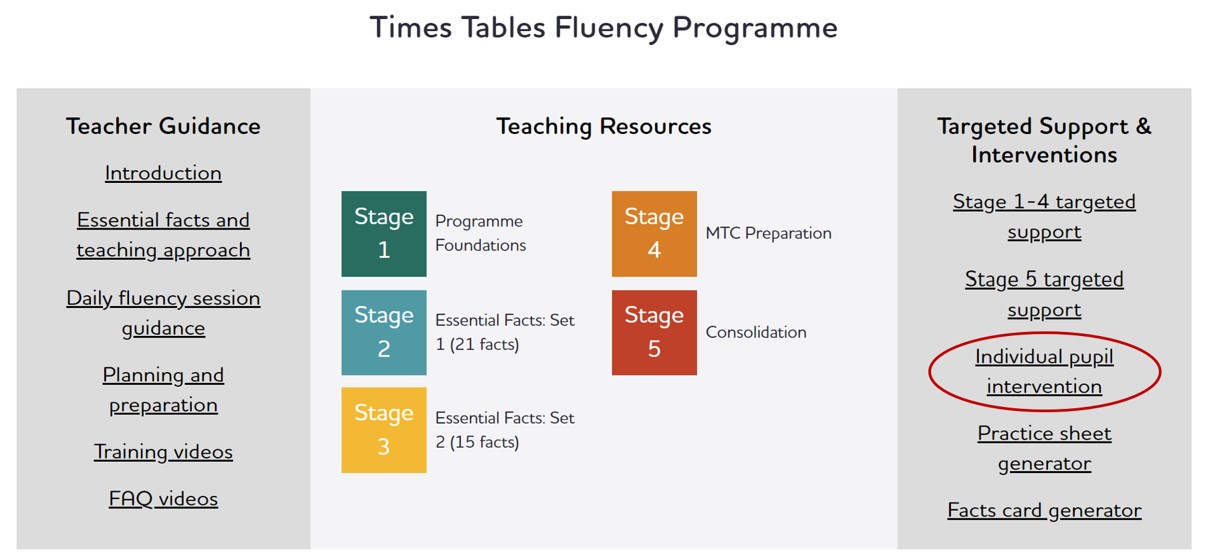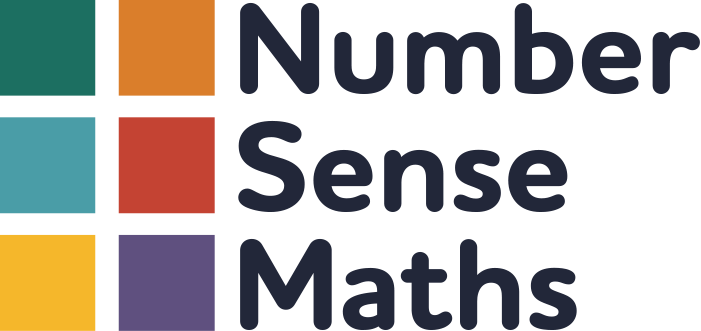Reflections on the MTC
The statutory Year 4 Multiplication Tables Check (MTC) has been running for four years now but in a variety of guises - pilot and non-pilot, heavily interupted by Covid and less interupted by Covid - and it's getting to a stage now where I think there are some useful things to have in mind if you are involved in it any way. If you are new to maths leadership or Year 4, or have a particular focus on times tables and the MTC in your school, I've pulled out five things to think about.
1. Get an approach and curriculum in place
There is no way to do well in the MTC without being fluent in all of your facts: skip counting or deriving from related facts isn’t enough - the MTC requires children to recall them.
The virtually universal view among teachers I talk to is that they also want children to just be able to recall times tables, but for as long as I have been teaching there has been no detailed guidance on exactly how to achieve this. I think that is part of what can make the MTC stressful from a teacher point of view – thinking “I really want these children to be fluent but I don’t know how to get them all there”. At a conference I was at this term only one teacher in a room of about 40 said that they enjoyed teaching times tables. This is such a shame because when you have a method that works, teaching times tables to fluency is incredibly enjoyable and rewarding work. Whether you are an adult or a child, being successful feels really good. Our last blog here described some features we feel are important. We wrote our Times Tables Fluency programme to provide a complete comprehensive scheme of work for getting all children to fluency in multiplication and division facts.
So to (possibly) state the obvious, by far the most impactful thing that you can do to prepare children for the MTC is to have a really carefully planned and well understood times tables curriculum and pedagogy.
2. Check that the Year 4 team know what to expect
You may have an experienced Year 4 teacher/team who are very familiar with the MTC. But if any of your Year 4 team are new, make sure they understand what they are working towards.
Early in the school year sit down and cover the following:
- Important dates for the test. The multiplication tables check administration guidance lists these.
- What data the school will get and how it is used:
- That we will find out after the score for each child, but the DfE portal does not give any information about which facts the children got right and wrong.
- That cohort outcomes are reported as part of ASP in two ways: % getting 25/25, and the average. Look at school data and national average data from ASP for context. (If you as subject leader aren't familiar with ASP then ask your head to go through it with you).
- What the check format looks like to pupils (annoyingly the DfE don’t seem to have a demo of this on their website for teachers to see year group, but Mathsframe has a good enough free simulator).
And crucially
- What the school’s approach is to teaching times tables to fluency.
We'd suggest the teaching of times tables feels like a team effort, so Year 3 should also be really clear about how their curriculum and provision feeds into Year 4, and the expected end points for children at the end of both Year 3 and Year 4. As subject leader, check in regularly through the year. Of course in some small schools, the Year 3 teacher, Year 4 teacher and maths lead may all be the same person. If so, try to find an interested colleague elsewhere in the school to check in through the year on how times tables teaching is going.
You'll also need to have another more formalised get together as a team as soon as the DfE's MTC service opens in April to go through the logistics of generating PINs, and setting access arrangement. The videos here are useful for supporting that.
3. Familiarise the children with the check format
Being fluent in times tables facts is necessary but not sufficient to do well in the MTC. Children also need to be comfortable with the format and some online practice needs to be part of the preparation. To make sure that all are accessing this you need to include this as part of class time in addition to anything which children may do at home. The DfE guidance says “pupils may find a small benefit from using a keyboard or a touchscreen rather than a mouse”. I’d suggest using the touchscreen on a tablet is easiest. If you have limited numbers of tablets figure out from the start how you timetable pockets of online practice for all children from the start of the year.
Personally I’d be nervous about using any online check simulator including all facts to 12 x 12 from the start of Year 4. My feeling is that you should plan for children to be highly successful in any online practice focused on familiarising children with the format. This isn’t going to happen if they are routinely being asked to answer facts they haven’t been taught yet: they are then subliminally getting the message “there will be lots of facts I don’t know in there” rather than “all I am doing is typing in facts that I definitely know”. If you follow our programme, or another approach where all children are taught the same facts at the same time, select only facts they have been taught so far. Mathsframe allows you to do this.
4. Use access arrangements to make sure children’s scores reflect their knowledge
Even with the facts learnt and familiarisiation with the check format in place, some children will need access arrangements. The purpose of the MTC is to determine whether pupils can recall their times tables fluently, and we only get a clean data set - nationally and locally - if children's scores in it actually reflect their knowledge.
In the school where I work, once our children had learnt all of their times tables facts to 12 x 12 we then watched each complete a check on the DfE's MTC ‘try it out’ section. It’s a pain that they don’t tell you the children’s scores, so the only way to know whether children’s online scores reflect their actual times table knowledge is to watch children individually and sit and note down which they do and don’t get right. So as a team you will need to plan some cover for your Year 4 teacher as the test approaches.
As we track children's times tables scores daily as part of the Times Tables Fluency programme, we already had detailed data on children's level of fluency, so could easily identify any children with a disparity between their daily score and their online try it out score. The full access arrangements options through the MTC portal are described here. Here are my reflections on particularly useful things to think about in advance of administering the check (the third of these requires setting up on the DfE MTC portal):
Not pressing enter
The scores entered into the box get accepted whether or not you press enter. This year we didn’t tell children not to press enter, but I’ve heard from friends in other schools that this makes a big difference and next year we’ll definitely tell the children just to type the product and then let each fact ‘time out’.
Annoyingly the lack of ability to see the actual answers doesn’t allow you to identify likely mis-types vs unknown facts but there must be quite a lot nationally among the 24s and 23s; certainly some of ours were aware of making them during the check. As well as providing the advantage of (possibly) being able to correct mis-types before your finger has hit the enter button, this also provides a bit of breathing space.
Saying times tables out loud
In our Times Tables Fluency programme children come to learn the facts by repeated oral rehearsal – the teacher saying each fact and the children repeating it back. By the time of the check children will fall into 3 groups:
- Ones for whom the facts have become instinctive- they get beyond having to hear the sound pattern at all and the product just pops into their head when they see the written fact
- Ones who mentally say the sound pattern of the facts in their heads
- Ones who read the factors out loud to ‘trigger’ the sound memory of the product
For the children in this final group, they took the check individually so they could read the facts out loud to help remember them, just as they do in class. For our two form entry school, this was about 10 children.
Next button
For a good proportion of children who have a disparity between class scores and MTC practice scores, the next button helps a lot.
I think it would be more sensible to just have this as standard for all. If you don’t know 7 x 3 = 21 pausing between each question isn’t going to make you know it, so I can’t see that providing the next button by default would give many false positives. If you type ‘3’ instead of ‘30’ and know you have done that, then definitely for some children (and I’d imagine quite a lot) a chance to reset is helpful to ‘determine whether pupils can recall their times tables fluently’ which is part of the DfE’s stated purpose of the MTC.
5. Use the MTC as a way point, not an end point
Children who don’t pass the phonics screening check retake it in Year 2. Although we don’t have a Year 5 retake for the MTC I’d mentally pretend we do, so once the check is done DO NOT stop whatever processes you have been following. The first year of the pilot check (pre Covid) we did take our foot off the gas after the MTC, and when we did a times table session a week before the end of term we were shocked by the drop off in retention of facts. So continue to the end of Year 4 and pick up on Day 1 of Year 5. The drop off over the summer will be a shock at first, but if you have had good systems in place in Year 4 then recall will improve back to pre holiday levels within a couple of weeks.
You will have two groups of children:
- Children who had learnt all of the facts prior to the MTC. They will need retrieval practice to keep already known facts ticking over
- Children who hadn't finished learning their facts before the MTC. They will need additional targeted support.
If you follow our Times Tables Fluency programme, targeted support will have been embedded within your whole class teaching approach throughout Year 3 and 4, and the vast majority of your children will be in the first group.
You will also need to make sure that children can apply their times tables knowledge to multiplicative concepts. Be clear on whether you are planning this through your times table curriculum or your main maths curriculum. This is all provided as part of the Times Tables Fluency programme.
Determining your core fact set after the MTC
For ongoing retrieval practice after the MTC you have a choice to make: continue practising facts to 12 x 12, or focus in on practising facts to 9 x 9. In both cases this should include inverse division facts. The ready-to-progress guidance suggests focus to 9 x 9 for any children who haven't secured the facts

That is our strong steer as well. Unless the vast majority of your cohort have got above 23 or above in the MTC, we'd suggest prioritising practice of facts to 9 x 9 for the whole class going forward after the MTC.
If you use our Times Tables Fluency Programme our Stage 5 consolidation units are 'either/or', so you can choose whichever pathway suits you better.
But whatever approach you use, make your core fact set an intentional decision at a whole school level. This should be a joint decision between Year 4, Year 5 and the maths lead, driven by the cohort outcomes in the MTC.

Determine your targeted support approach
There will be some children who will benefit from targeted support. Use your MTC data to identify who those are. Anyone getting 20 or below in the MTC (nationally this is still about 40% of children) will need to be on your targeted support radar.
Targeted support is a whole separate subject we will write a blog on at some stage, but most of this should happen through your daily fluency session rather than as something extra to timetable in.
Like anything, the tighter your whole class provision is in the first place, the fewer the children who will need additional intervention beyond this. At the moment there are lots of children nationally who do need something extra (about 20% of children scored 15 or less in the MTC), and for them we advocate what is essentially a precision teaching approach of not-yet-known facts. Our individual pupil intervention pack provides absolutely everything you need to help these lowest scoring children learn their times tables. It's written by teachers so is designed to be completely manageble in your typical Year 5 class. In most cases children will learn all their facts by the middle of Year 5 if you start straight away at the start of the school year.

Monitoring progress against set end points
We are absolutely focused on providing guidance and teaching resources to show schools exactly how every child can learn times tables (we say every child accessing a mainstream education in any significant way, and many who aren't). So set yourself an end point of 100% of children knowing 100% of facts to 9 x 9. Then track against this. You might want to 'pretend' you have a Year 5 MTC retake and use Mathsframe or another online practice check to assess, say, anyone getting 20 or below in Year 4 to check they have reached 23+ at the end of Year 5 (I'm allowing a couple of marks slippage for input error). Through Number Sense you will be tracking the number of facts your lowest scoring children know every week using flashcards. But whatever approach you use I'd suggest you record a times table score each half term on your whole school tracking system so you can compare cohorts over time, link patterns in scores to provision, and know year on year when in Year 5 you have hit the point of all children knowing all of their times tables facts.
To read more about our Times Tables Fluency programme click here.
To sign up for a free introductory training session click here.
